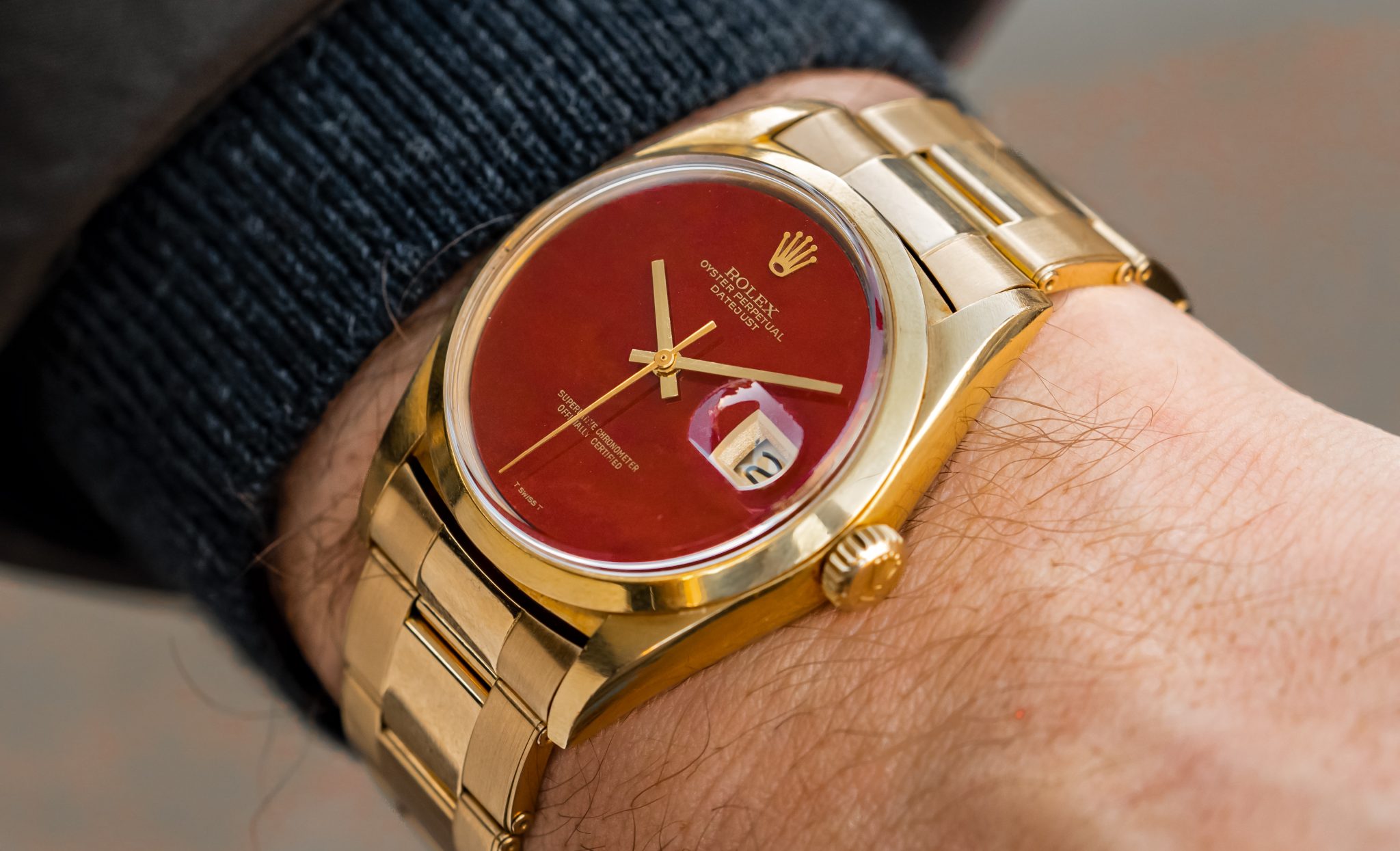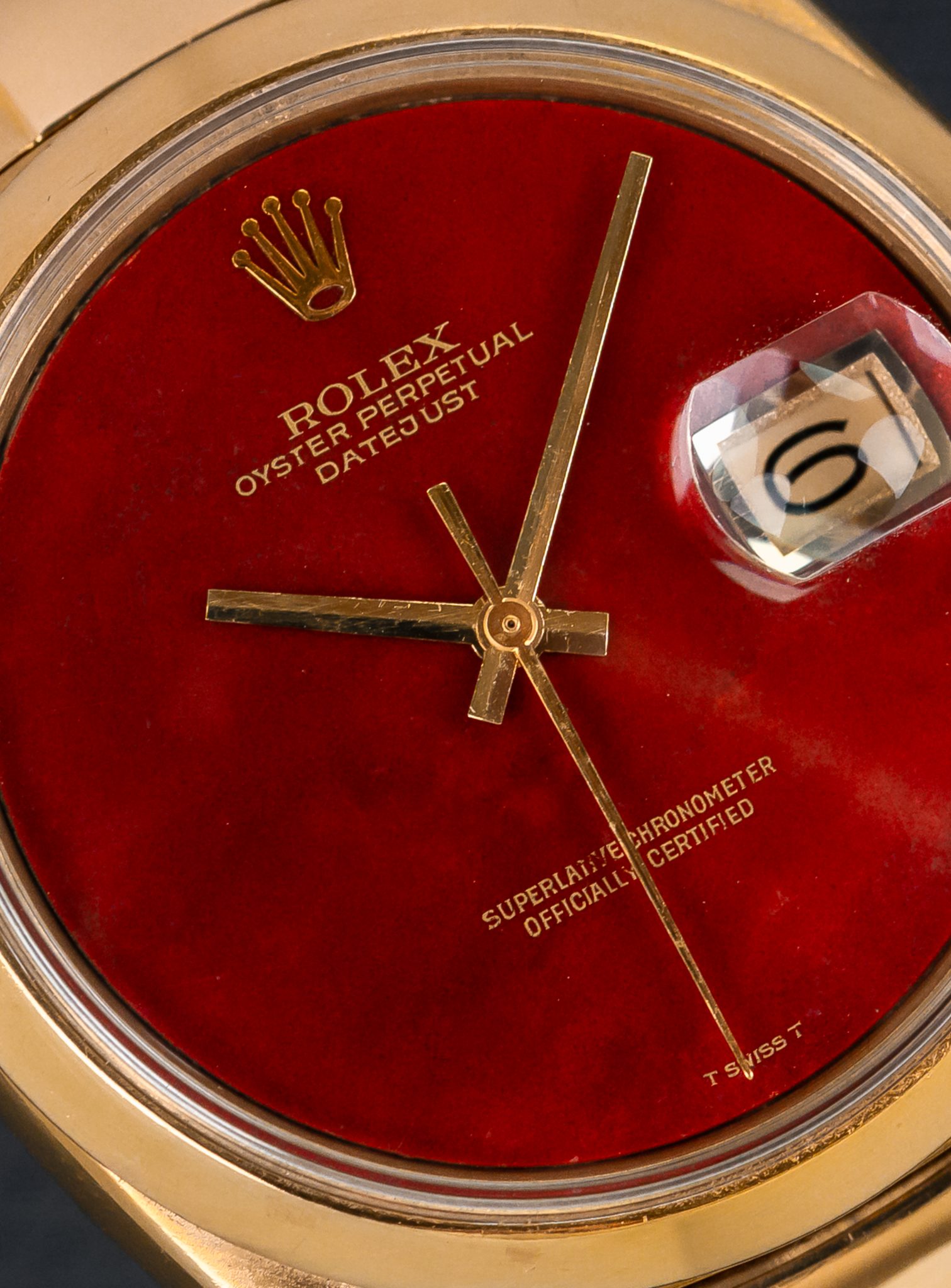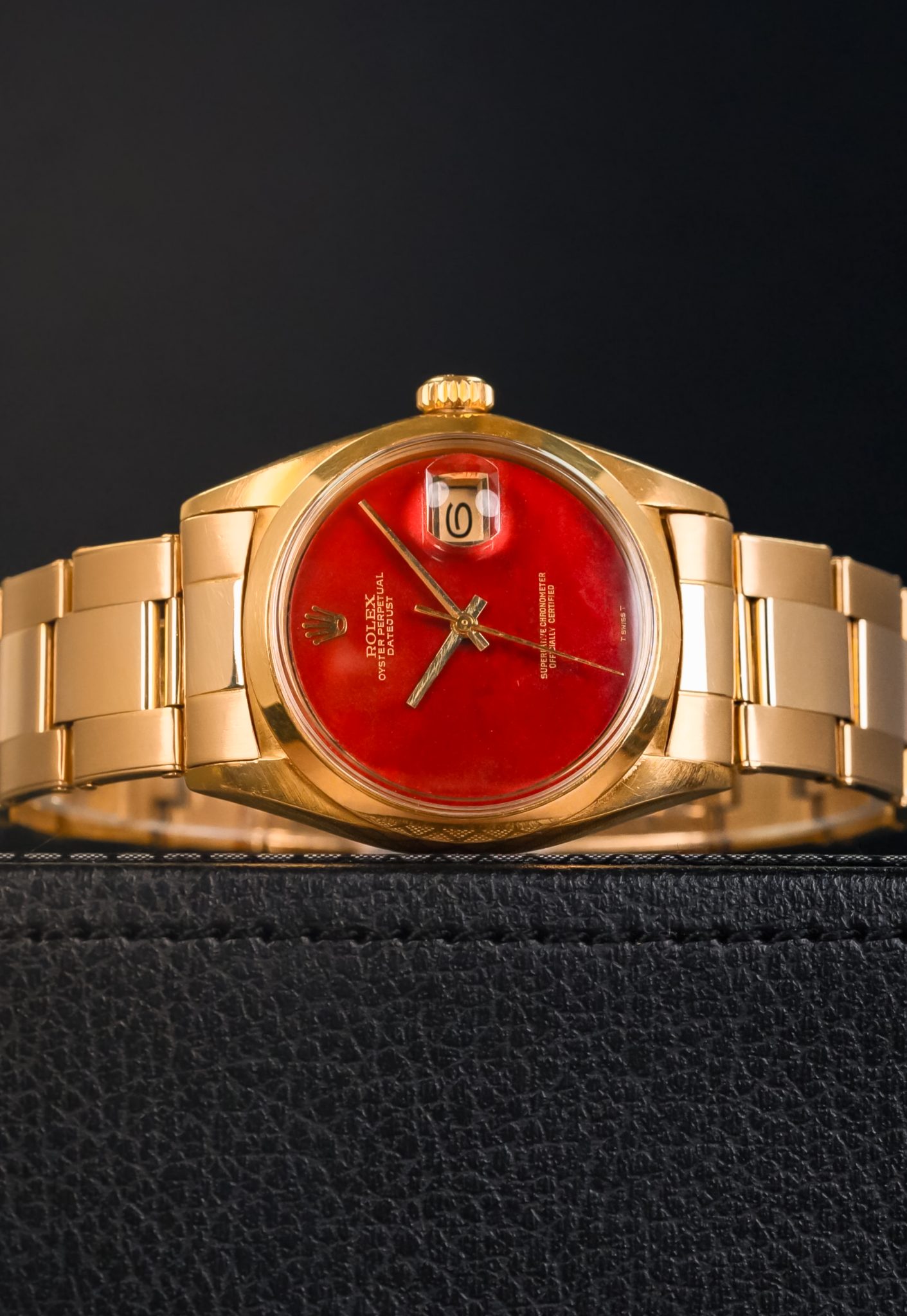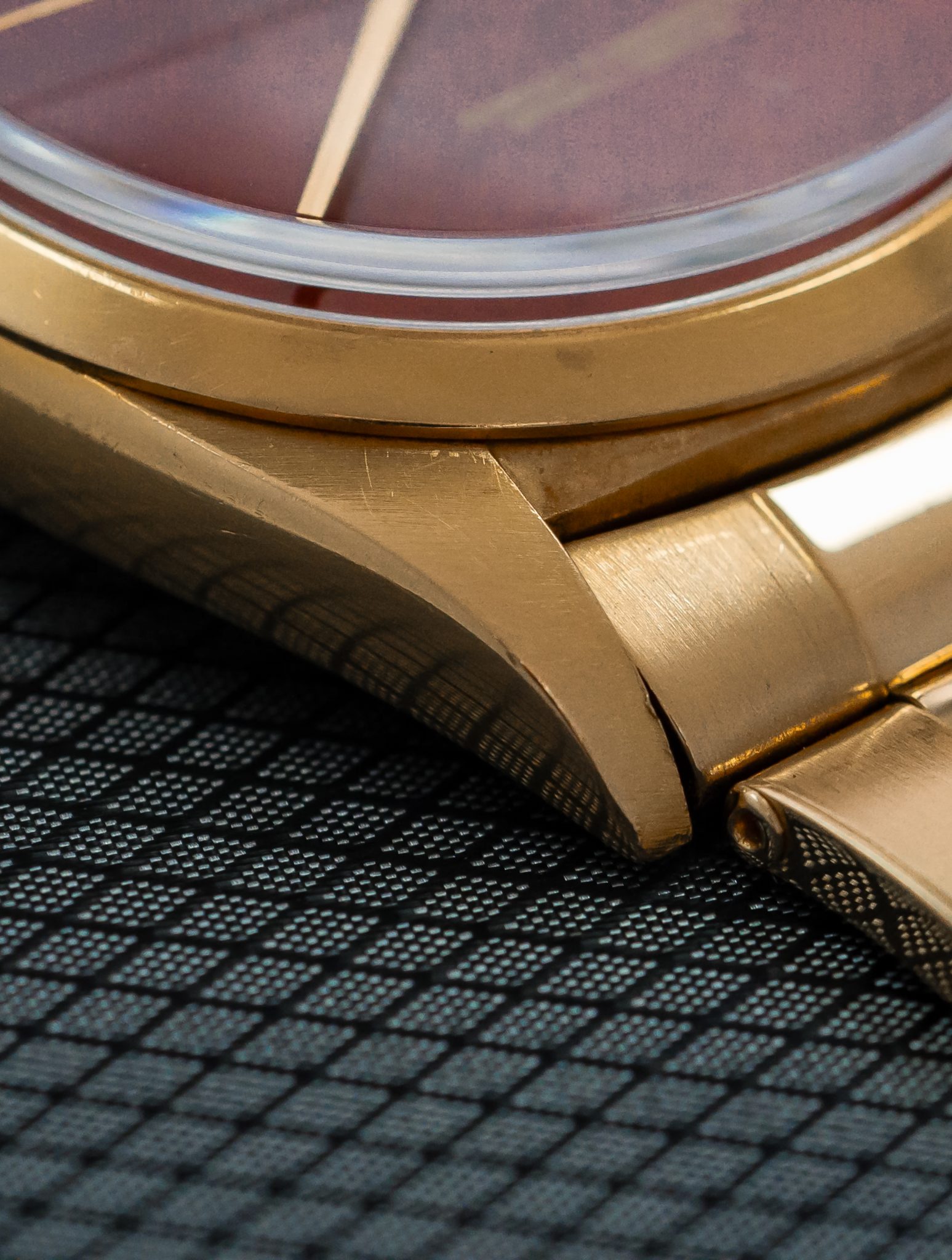
Red Jasper Dial 1600/8 Rolex Datejust
It took a very particular person to buy a stone dial Datejust in 1972. You’re adding very significant premium to the base model, sort of the Cayman GT4 of the vintage Rolex range. You could’ve purchased a Day-Date for the premium, but you chose discretion on purpose. They’re rare for this reason alone. But this is as uncommon as it gets. This is one of few Datejusts that can give even the rarest stone Day-Dates a run for their money. When you say jasper dial Rolex, they’re normally talking about a green hardstone with red veins. But jasper occurs naturally in varying shades and one of those is this rich red. It’s what’s known as a red jasper dial and it’s far less common than the already hard-to-find green jasper. It might just be the ultimate-spec Datejust. It’s a big claim but as I write, there’s none other I’d rather wear.


Interestingly, while traditional green jasper was used in Day-Dates and Datejusts, red jasper has only surfaced in the market (so far at least) in Datejusts alone, making this something of the ultimate 1600. That’s right, it’s a 1600/8, not 1601/8, meaning smooth bezel. This is unlike most we’ve seen, both for its more smooth bezel and sporting rivet Oyster bracelet over President or Jubilee. Every red Jasper Datejust I’ve seen to date previous was fluted. This specification is as sporting as a Datejust gets.
Only one example has been publicly documented in white metal, a white gold sold at Monaco Legends for 195K USD in ’21. To my knowledge there are only two white gold examples known. In yellow gold, there are but a few recent results to study. Christies sold one just last May that was quite polished at 74K USD, sans bracelet. S Song sold one in a flash earlier this year around 80K. Collectors Gallery Dubai, too, have an example currently offered at 120K. The market is sporadic and stochastic, as is often the case when comparable sales are in the single digits. It’s all about the quality of any given example and its provenance. (And for those uninitiated, it’s entirely correct to see T Swiss T on hardstone dials with non-luminous hands.) I would not be remotely surprised to find Datejusts and Day-Dates of this calibre continue to garner massive attention an interest; we’re really still only piecing together detailed knowledge about many of them. The more dimly lit corners of collecting are often the most fun.


This example is a clear standout. Condition for watch like this starts in the dial, where 90% of the value is tied up. The stone here is magnificent. Zero hairlines as far as I can see. Excellent print. Entirely correct. If you are its future buyer, please fly to pick it up. I dread to think what could happen shipping this during winter. Its case, though, doesn’t let the aesthetic down. It is full, even, sharp, and likely not polished with a bunch of even light superficial wear. The whole thing is a dream. It comes from a well-regarded Dutch retailer, watch only.











